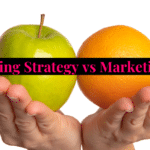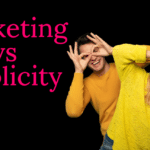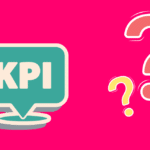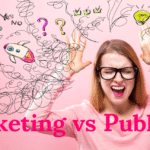In the world of marketing, two distinct strategies are often employed: Business-to-Business (B2B) and Business-to-Consumer (B2C) marketing.
While both share the same end goal of driving sales, their approach and tactics differ significantly.
So, what’s the difference?
In a nutshell…
B2B marketing is aimed at selling products or services to other businesses, while B2C marketing targets individual consumers.
Understanding the differences between B2B and B2C marketing is essential for any organization to effectively reach its target audience and achieve its sales goals.
In this article, we’ll explore the nuances of B2B and B2C marketing, their unique strategies, and how they each cater to their specific target audience.
Let’s dive in!
What is B2B Marketing?
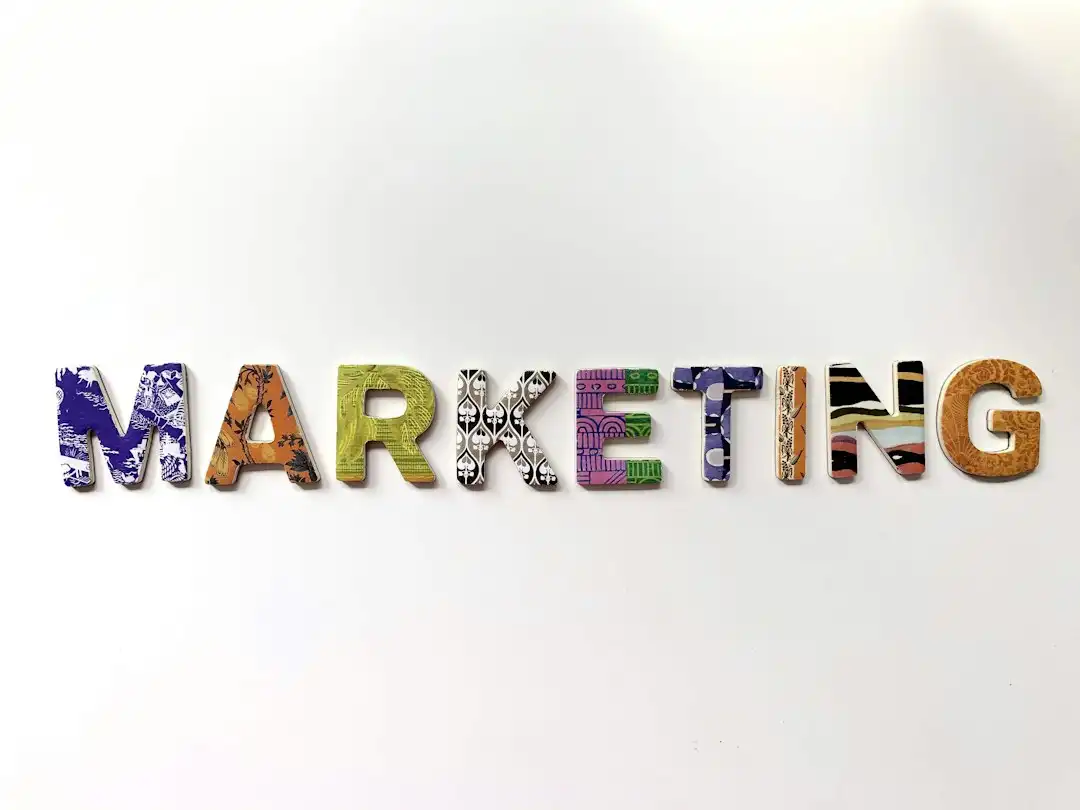
Business-to-business (B2B) marketing refers to the strategies and techniques used by companies that sell products or services to other businesses rather than to individual consumers.
It’s all about creating value for other businesses by offering solutions that can help them achieve their objectives. This often involves a longer sales cycle, as B2B purchases typically involve larger budgets and more complex decision-making processes.
The primary objective of B2B marketing is to generate leads, nurture relationships, and ultimately close sales with other businesses.
So, what about B2C?
What is B2C Marketing?
Business-to-consumer (B2C) marketing, on the other hand, is the process of promoting products and services directly to individual consumers.
This type of marketing aims to create an emotional connection between the brand and the consumer, leading to repeat purchases and brand loyalty.
The B2C marketing approach is often more focused on shorter sales cycles, as consumer purchases are typically smaller and involve less complex decision-making processes.
The primary goal of B2C marketing is to drive immediate sales and create a loyal customer base.
5 Key Differences Between B2B Marketing and B2C Marketing
While B2B and B2C marketing share some common principles, there are significant differences in their strategies, target audiences, and sales cycles.
In this section, we’ll highlight the key distinctions between the two, helping you tailor your marketing efforts to the right audience.
Specifically, we’ll discuss:
- Sales Cycle and Decision Making
- Target Audience
- Personalization
- Emotional vs. Rational Appeal
- Marketing Channels
Let’s start with the sales cycle and decision-making.
1. Sales Cycle and Decision Making
One of the most significant differences between B2B and B2C marketing is the sales cycle and decision-making process.
In B2B marketing, the sales cycle is typically longer, and the decision-making process involves multiple stakeholders within the buying organization.
This is because B2B purchases often require a higher level of investment, and the products or services being sold are often more complex and have a more significant impact on the buying organization.
B2C marketing, on the other hand, usually involves a shorter sales cycle, with the decision-making process often made by an individual consumer.
The products or services being sold are generally lower in cost, and the impact on the consumer is often more immediate.
So, what about the target audience?
2. Target Audience
B2B marketing targets businesses and organizations as its primary audience.
The focus is on reaching key decision-makers, such as CEOs, purchasing managers, or department heads, who are responsible for making purchasing decisions on behalf of the company.
B2C marketing, on the other hand, targets individual consumers. The goal is to reach and influence potential customers who have a need or desire for the product or service being offered.
The target audience for B2C marketing can be segmented based on various factors, such as demographics, interests, and purchasing behaviors.
3. Personalization

While both B2B and B2C marketing can benefit from personalization, the level of personalization often differs between the two.
In B2B marketing, personalization often focuses on tailoring the sales process to the specific needs and pain points of the business being targeted.
This may involve creating custom proposals, providing in-depth product demonstrations, or offering personalized customer service.
In B2C marketing, personalization often focuses on tailoring the marketing messages and offers to the individual consumer.
This can involve using data to create targeted advertising, sending personalized email campaigns, or offering product recommendations based on the consumer’s past purchase history.
4. Emotional vs. Rational Appeal
B2B and B2C marketing often appeal to different aspects of human psychology.
In B2B marketing, the focus is on making a rational appeal. The marketing messages are designed to demonstrate how the product or service being offered can help the business save money, increase efficiency, or achieve other measurable objectives.
The goal is to convince the decision-makers that the purchase is a sound investment for the company.
In B2C marketing, the focus is often on making an emotional appeal. The marketing messages are designed to create a strong emotional connection with the consumer, such as by appealing to their desires, aspirations, or fears.
The goal is to create a sense of urgency and drive the consumer to make a purchase based on their emotional response.
Lastly, let’s look into the different types of marketing channels.
5. Marketing Channels

The choice of marketing channels can also vary between B2B and B2C marketing.
In B2B marketing, the focus is often on using professional and industry-specific channels to reach the target audience.
This may include attending trade shows, hosting webinars, or using LinkedIn and other professional networking sites.
The goal is to build relationships and establish credibility within the industry.
In B2C marketing, the focus is often on using more consumer-oriented channels to reach the target audience.
This may include using social media, display advertising, or traditional media such as TV and radio.
The goal is to create brand awareness and drive consumer engagement.
By understanding these key differences, you can tailor your marketing strategies to effectively reach your target audience and achieve your business goals.
Now, let’s run through how to create a B2B marketing strategy.
How to Create a B2B Marketing Strategy in 7 Simple Steps

Creating an effective B2B marketing strategy involves understanding your target audience, identifying your unique selling proposition, and leveraging the right marketing channels to reach potential clients.
Here’s a step-by-step guide to crafting a successful B2B marketing plan:
- Identify Your Target Audience: Start by identifying the specific businesses or industry sectors you want to target. Research their needs, pain points, and buying behavior to create a detailed buyer persona.
- Develop a Unique Selling Proposition (USP): Determine what sets your product or service apart from the competition and how it addresses the needs of your target audience. Your USP should clearly communicate the value you offer to potential clients.
- Choose the Right Marketing Channels: B2B marketing channels include content marketing, email marketing, social media, and search engine optimization (SEO). Select the channels that align with your target audience and business goals.
- Create Quality Content: Develop high-quality content that educates, informs, and engages your audience. This could include case studies, white papers, and blog posts that address industry-specific challenges.
- Establish KPIs: Identify key performance indicators (KPIs) that will help you measure the success of your B2B marketing efforts. This could include metrics like website traffic, lead generation, and conversion rates.
- Implement Lead Nurturing Strategies: Develop a lead nurturing strategy to guide potential clients through the sales funnel. This may involve using email automation, retargeting ads, and personalized content to keep your brand top of mind.
- Regularly Review and Optimize: Continuously monitor your B2B marketing efforts and adjust your strategy as needed. Use data analytics to track your KPIs and make informed decisions about where to focus your resources.
Remember that an effective B2B marketing strategy requires patience, consistency, and a deep understanding of your target audience.
By following these steps, you can create a plan that drives leads, fosters relationships, and ultimately leads to business growth.
Now, let’s look at the B2C side of things.
How to Create a B2B Marketing Strategy in 7 Simple Steps
Creating a B2C (Business-to-Consumer) marketing strategy involves understanding your target consumers, defining your value proposition, and crafting a plan that engages customers through the right channels and with the right messages.
Here’s a seven-step approach to creating a B2C marketing strategy:
- Define Your Target Audience:
- Conduct market research to understand who your customers are, including demographics, psychographics, behaviors, and preferences.
- Create buyer personas that represent your ideal customers, which will help you tailor your marketing efforts.
2. Set Clear Marketing Goals:
- Determine what you want to achieve with your marketing efforts, such as increasing brand awareness, generating leads, or boosting sales.
- Ensure your goals are Specific, Measurable, Achievable, Relevant, and Time-bound (SMART).
3. Analyze Your Market and Competitors:
- Research the market to identify trends, opportunities, and threats.
- Analyze your competitors to understand their strengths, weaknesses, and marketing strategies.
4. Develop Your Unique Value Proposition (UVP):
- Clearly define what makes your product or service unique and why consumers should choose it over competitors.
- Your UVP should address the specific needs and desires of your target audience.
5. Choose Your Marketing Channels:
- Decide on the most effective channels to reach your target audience. This could include social media, email marketing, content marketing, search engine marketing (SEM), and more.
- Consider a multi-channel approach that integrates various touchpoints for a cohesive customer experience.
6. Create Engaging Content and Campaigns:
- Develop a content strategy that addresses the interests and pain points of your audience.
- Plan and execute marketing campaigns that resonate with your target consumers and communicate your UVP.
- Use storytelling and emotional appeals to connect with customers on a personal level.
7. Measure and Optimize:
- Implement tools and metrics to track the performance of your marketing efforts. This can include web analytics, conversion rates, social media engagement, and return on investment (ROI).
- Regularly review your results and adjust your strategy as needed. Test different approaches to see what works best for your audience.
Remember, a successful B2C marketing strategy is not static; it should evolve with changes in consumer behavior, market conditions, and the overall performance of your marketing activities.
All good things must come to an end, let’s wrap this article up for now.
Wrap Up

In the ever-evolving landscape of marketing, understanding the nuances of B2B and B2C marketing is crucial for any business seeking success.
While the end goal may be the same — driving sales — the strategies, target audiences, and sales cycles differ significantly between the two approaches.
By recognizing these distinctions and tailoring your marketing efforts accordingly, you can effectively reach your target audience, foster meaningful relationships, and ultimately drive business growth.
Best part? Both B2B and B2C can be a lot of fun!
Happy Marketing!
P.S. Keen to learn more or more of a video learner, this clip dives into things further and explains everything really well.
Frequently Asked Questions

What are the key differences between B2B and B2C marketing?
The key differences between B2B and B2C marketing lie in their target audiences, sales cycles, decision-making processes, and marketing strategies.
B2B marketing targets other businesses, focusing on building long-term relationships and providing value-driven solutions.
In contrast, B2C marketing targets individual consumers, often employing emotional appeals and shorter sales cycles.
How do the sales cycle and decision-making process differ in B2B and B2C marketing?
The sales cycle and decision-making process in B2B marketing are typically longer and involve multiple stakeholders within the buying organization.
This is because B2B purchases often require a higher level of investment and involve more complex products or services.
On the other hand, B2C marketing usually has a shorter sales cycle, with the decision-making process made by an individual consumer.
What are some examples of B2B and B2C marketing strategies?
B2B marketing strategies often include content marketing, email marketing, and industry events.
These strategies aim to educate and build trust with other businesses, as well as to generate leads and nurture relationships.
B2C marketing strategies, on the other hand, may include social media advertising, influencer marketing, and loyalty programs.
These strategies focus on creating an emotional connection with individual consumers and driving immediate sales.
What are the primary objectives of B2B and B2C marketing?
The primary objective of B2B marketing is to generate leads, nurture relationships, and ultimately close sales with other businesses.
B2B marketers aim to provide value-driven solutions and build long-term partnerships with their clients.
In contrast, the primary goal of B2C marketing is to drive immediate sales and create a loyal customer base.
B2C marketers often focus on creating emotional connections with consumers and fostering brand loyalty.
How can personalization be utilized in B2B and B2C marketing?
Personalization can be a powerful tool in both B2B and B2C marketing. In B2B marketing, personalization often involves tailoring the sales process to the specific needs and pain points of the business being targeted.
This may include creating custom proposals, providing in-depth product demonstrations, or offering personalized customer service.
In B2C marketing, personalization often focuses on tailoring marketing messages and offers to the individual consumer.
This may involve using data to create targeted advertising, sending personalized email campaigns, or offering product recommendations based on the consumer’s past purchase history.
What is the impact of emotional versus rational appeals in B2B and B2C marketing?
In B2B marketing, the focus is often on making a rational appeal. The marketing messages are designed to demonstrate how the product or service being offered can help the business save money, increase efficiency, or achieve other measurable objectives.
This is because B2B purchasing decisions are typically driven by logic and a clear return on investment.
In B2C marketing, the focus is often on making an emotional appeal. The marketing messages are designed to create a strong emotional connection with the consumer, such as by appealing to their desires, aspirations, or fears.
This is because B2C purchasing decisions are often driven by emotion and a desire for immediate gratification.

